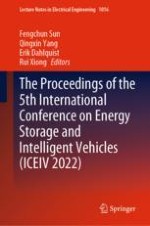2023 | Buch
The Proceedings of the 5th International Conference on Energy Storage and Intelligent Vehicles (ICEIV 2022)
herausgegeben von: Fengchun Sun, Qingxin Yang, Erik Dahlquist, Rui Xiong
Verlag: Springer Nature Singapore
Buchreihe : Lecture Notes in Electrical Engineering
